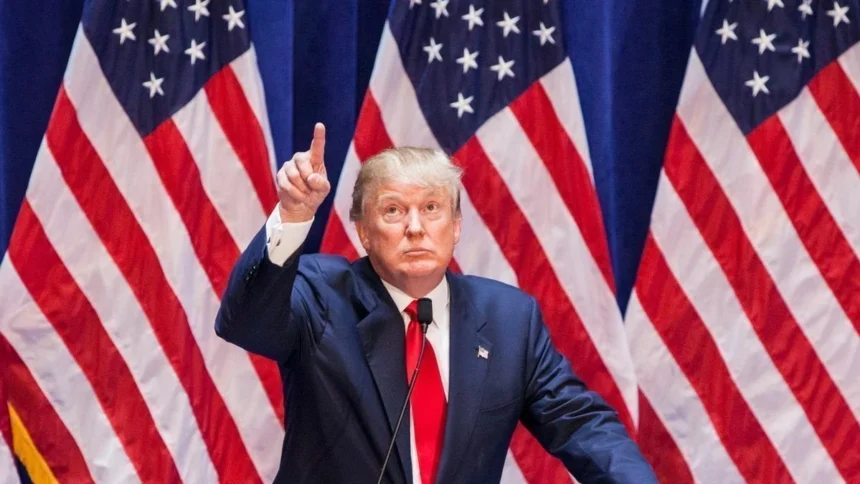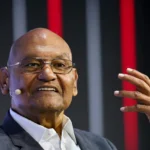In a significant shift from his earlier hardlines stance, President Donald Trump has indicated a willingness to reduce tariffs on Chinese imports, provided a trade agreement is reached. This development comes amidst escalating market volatility and growing concerns over the global economic impact of the ongoing U.S.-China trade tensions.
A Softer Tone from the White House
President Trump stated, “If China does not agree to a trade deal, the United States will unilaterally set the terms”. Speaking to reporters, Trump emphasized a cooperative approach in negotiations with Beijing, expressing a willingness to be “very nice.” He also mentioned that tariffs on Chinese imports would decrease significantly if a deal is reached, though not be eliminated entirely.
This conciliatory approach marks a departure from the administration’s previous rhetoric, which had emphasized a tough stance on Beijing. The shift is seen by analysts as a response to mounting pressure from financial markets and key economic stakeholders.
Market Reactions and Economic Implications
Following Trump’s comments, Chinese stocks traded in Hong Kong experienced a modest uptick, and the offshore yuan strengthened by approximately 0.2% against the U.S. dollar. These movements suggest cautious optimism among investors regarding a potential de-escalation of trade tensions. However, the broader economic landscape remains fraught with uncertainty.
The U.S. stock market has been experiencing significant volatility, with the S&P 500 and Dow Jones Industrial Average both registering substantial losses in recent weeks. Analysts attribute this turbulence, in part, to concerns over the escalating trade war and its potential impact on global supply chains.
China’s Response and Diplomatic Manoeuvres
While Beijing has yet to issue an official response to Trump’s latest overtures, Chinese state media outlets have noted the shift in tone. The media outlet Cailian described Trump’s comments as “a sign Trump is already softening stance on his signature tariff policies.” On Chinese social media platform Weibo, the phrase “Trump chickening out” trended, reflecting a perception among some Chinese netizens of a U.S. retreat.
Meanwhile, Chinese officials have been engaging in diplomatic efforts to counteract U.S. pressure. President Xi Jinping, during a meeting with Azerbaijan’s President Ilham Aliyev, reiterated China’s opposition to tariff and trade wars, emphasizing their detrimental effects on all countries involved. Additionally, Chinese Premier Li Qiang reportedly sent a letter to Japanese Prime Minister Shigeru Ishiba, advocating for a coordinated response to U.S. tariffs.
Prospects for a U.S.-China Trade Deal
Despite the softened rhetoric, significant hurdles remain in the path toward a comprehensive U.S.-China trade agreement. Treasury Secretary Scott Bessent, speaking at a closed-door investor summit, acknowledged that while de-escalation is necessary, a comprehensive deal could take two to three years to materialize. He emphasized the need for a rebalancing of trade that would allow the U.S. to bolster its manufacturing sector.
Negotiations have yet to formally commence, but recent developments suggest that both sides may be preparing for dialogue. Beijing has dispatched high-ranking officials, including People’s Bank of China Governor Pan Gongsheng and Finance Minister Lan Fo’an, to Washington for meetings coinciding with the World Bank Group and International Monetary Fund gatherings. These interactions could pave the way for preliminary discussions. Furthermore, the appointment of Li Chenggang as China’s vice commerce minister and trade envoy indicates Beijing’s readiness to engage in negotiations. Henry Wang Huiyao, founder of the Centre for China and Globalization, interpreted these moves as signs of a potential “stabilizing, cooling period” in U.S.-China relations.
Conclusion
President Trump’s recent comments signal a potential shift in the U.S. China trade negotiations with China. While the path to a comprehensive agreement remains complex and fraught with challenges, the softened rhetoric and diplomatic engagements suggest a mutual interest in de-escalating tensions. As both nations navigate the intricacies of trade diplomacy, the global economic community watches closely, hopeful for a resolution that fosters stability and growth.






